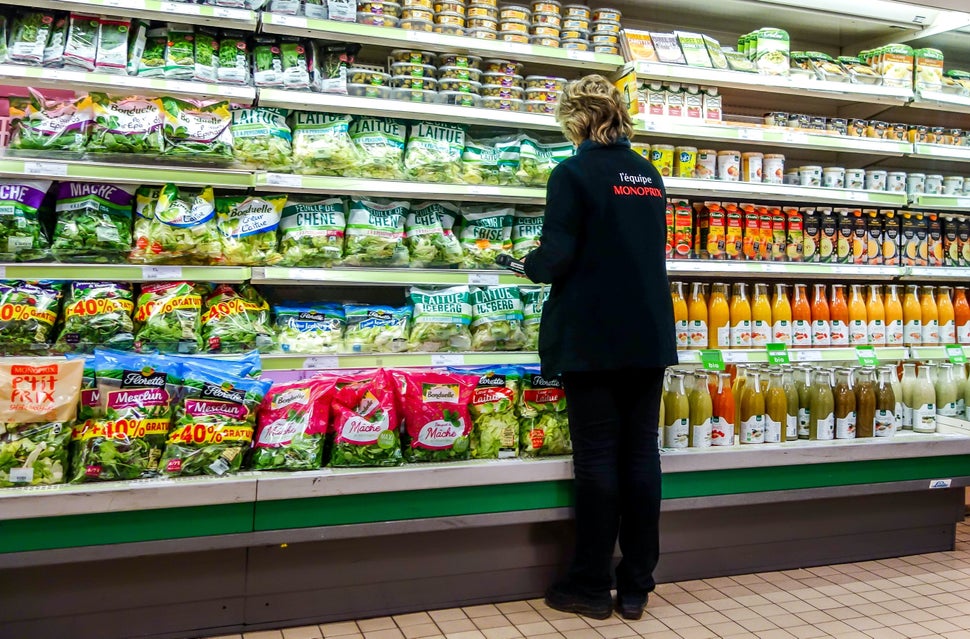Purchasing and consuming apples appears a quite healthy thing to do. A new study has found that every 1 kilo (2.2 pounds) of conventionally grown apples creates health impacts costing 21 cents due to the effects of pesticides and fungicides, resulting in ill leave and eventually shorter life span.
The study, from the Dutch company Soil & & More Effects, to be released at the end of May, highlights a crucial issue: The rate you pay for apples in the store does not cover the hidden expenses of producing them. Rather, these are paid for by society– through the ever-increasing expenses of healthcare and medical insurance.
It’s easy for people to distance themselves from the issue. The majority of people aren’t farmers and don’t think about these concerns daily. It’s the food choices we make every day that feed into our farming practices.
Standard farming practices concentrate on monocultures, genetically modified organism (GMO) seed usage and pesticides, contaminating both crops and groundwater, as well as conventional raking approaches that result in topsoil erosion. Regenerative farming practices use no pesticides and non-GMO seeds and focus on environment diversity, crop rotation, composting and no-till cultivation (growing crops without interrupting the soil).

Paulo Whitaker/ Reuters Workers gathering soybeans in Cuiaba, Brazil. Intensive monoculture farming– growing a single crop over a big location– is linked to
deforestation, pollution and broken down soil. Information from a 2014 white paper from the Rodale Institute, a nonprofit that supports regenerative farming, suggests that we could soak up more than 100 percent of the present yearly international co2 emissions with a complete switch to regenerative farming.
The point: It’s our choice. And we make these decisions every day. As an economist, I have actually always believed that altering the economy begins with altering farming and food. Despite the fact that the recent motion for localizing farm and food cycles has actually altered the face of the industry throughout numerous areas, mainstream international farming is still in the grip of significant business like Monsanto that have built their organisation design around perpetuating the old design that makes farmers based on their pesticides, herbicides and GMO seeds.
Similar to the apples, this model harms the environment and individuals’s health, which society has to pay to repair. A 2011 water study in France, for example, found that the quantity of tax money that the country was investing to tidy up water that had actually been contaminated through conventional farming, primarily because of pesticide usage,was roughly equivalent to the quantity invested on groceries nationally that year. To puts it simply, if individuals paid the real expense of groceries, they would be paying about two times as much.
The exact same has been discovered for the U.K. A November 2017 research study found the real costs of conventionally produced food in the U.K. are One Hundred Percent higher than current market value. Every British pound of food sales features another pound of concealed costs to society, through, to name a few effects, ecological contamination, disease related to production and diet-related diseases.

Philippe Huguen/ Getty Images A staff member monitoring shelves in a French grocery store. A 2011 research study discovered that France spent as much to clean up water polluted through conventional farming, generally from pesticide usage, as it did on groceries.
If you contribute to this the shockingly high suicide rate among farmers– consisting of in the U.S., where a 2016 study discovered that farming had the highest suicide rates of any occupation– and the fact that three-quarters of the world’s 800 million people who suffer from hunger are farmers, you start to see the impracticality of the current food system. This agricultural system damages our world, makes us sick and harms farmers physically and psychologically. In brief, we jointly create outcomes that no one desires.
At this point, you often hear the argument that, sure, there are these issues, but we require industrial agriculture to prevent remarkable food shortages.
That sounds ideal on the surface area. The appetite problem today is not a supply problem; it’s a circulation issue. Roughly one-third of the food produced on the planet for human intake every year gets lost or squandered. “We have two or 3 times the amount of food right now that is required to feed the variety of individuals on the planet,” said Joshua Muldavin, a geography professor at Sarah Lawrence College who focuses on food and farming guideline.
Individuals aren’t getting the food, said Emelie Peine, a teacher of international politics and economy at the University of Puget Noise. “As well as if [they] did, they don’t have enough money to purchase it,” she included. This is real in numerous industrialized nations too. An approximated = “_ blank “> 1 in 6 Americans, nearly 50 million people, cannot pay for to buy enough nutritious food to remain healthy, according to the Department of Farming.
Another key issue is diet: The less meat we consume, the more individuals we can feed. When compared by available calories produced, beef needs 160 times as much land and eight times the water and produces 11 times the greenhouse gases as the average for potatoes, wheat and rice.

Lucy Nicholson/ Reuters Cows at the Harris Livestock Cattle Ranch in the Central Valley in California. Beef requires 160 times as much land to produce per calorie as staples like rice,
wheat and potatoes. Regenerative farming might fix the world cravings issue if people consumed a more balanced diet plan, consisting of less beef, and if distribution problems were resolved properly.
Exactly what’s required is a shift method at scale that brings today’s worldwide agricultural system into the 21st century, into an economic environment that is not blind to the concerns of health, water, biodiversity and environment change.
I saw a small-scale variation of such a transition on the family farm I grew up on. Sixty years earlier, my parents decided to change from traditional to regenerative techniques of agriculture.
My father had read an article about the new form of farming in a journal. That piece of writing ignited a flame. However the moment my moms and dads started to change the way they farmed, numerous of their pals and others in the community turned against them. They likewise experienced a prolonged duration of poor harvests and financial challenge before they totally learned the brand-new farming practices and created channels for direct sales.
What got them through was a new idea that permitted them to reconsider their farm and their function as farmers in the context of a more comprehensive system. They also benefited from a core support group of a few buddies and experts who offered practical and training support. And they found out how to link directly to mindful customers happy to pay a reasonable rate for more sustainably produced food.
It’s these assistance structures that are needed today. They exist as prototypes, such as the Sustainable Food Lab– an international network of organizations dealing with sustainable farming– but they are needed at a much bigger scale.
Exactly what would it take to bring these kinds of changes to the scale of the entire system?
Stop the enormous subsidizing of commercial conventional farming and all the contamination that comes with it and reroute these resources to support regenerative farms and smallholders. Put a cost on the use of pesticides. Minimize the enormous use of prescription antibiotics in livestock farming by HALF up until 2020. And reproduce shift assistance structures like the Sustainable Food Laboratory throughout regions to combine all the key gamers that have to work together in order to make sustainable food practices mainstream.
And last, we need to never ever forget that this entire shift starts with our food options, with the journey from farm to fork that gets triggered and strengthened by the everyday food choices that we make.
CORRECTION: A picture caption in a previous variation of this story indicated beef needs 160 times as much water per calorie to produce as wheat, rice and potatoes. It requires 160 times as much land and 8 times as much water.
Source
https://www.huffingtonpost.com/entry/opinion-scharmer-our-broken-food-system_us_5b06b0a0e4b05f0fc8455acb
 #Bizwhiznetwork.com Innovation ΛI |Technology News
#Bizwhiznetwork.com Innovation ΛI |Technology News



